
- The Architectural Marvel of the Sagrada Familia: A Closer Look
- Understanding the Spiritual Significance of the Sagrada Familia
- Exploring Antoni Gaudí's Vision: The Genius Behind the Design
- Visiting the Sagrada Familia: Tips for an Unforgettable Experience
- The History of the Sagrada Familia: From Concept to Icon
- The Influence of Sagrada Familia on Modern Architecture
Barcelona, a city renowned for its rich history and vibrant culture, is home to one of the most extraordinary architectural wonders in the world. Visitors and online explorers alike are drawn to its stunning landmarks, but none are as iconic as the Sagrada Familia, designed by the visionary architect Antoni Gaudí.
As you embark on your virtual journey, The Magnificent Sagrada Familia: Discover Barcelona's Iconic Landmark Online, you will uncover the intricate details and fascinating history behind this masterpiece. From its towering spires to its breathtaking facades, the Sagrada Familia presents a unique blend of artistry and spirituality that captivates audiences around the globe.
The Architectural Marvel of the Sagrada Familia: A Closer Look
The Sagrada Familia stands as a testament to innovation and creativity in architectural design. Antoni Gaudí's vision transcended traditional styles, incorporating elements of Gothic and Art Nouveau. This unique combination creates a dynamic interplay of light and structure that enhances the overall experience of the basilica. Visitors often note how the changing sunlight transforms the interior, making it a living work of art.
One of the most remarkable aspects of the Sagrada Familia is its structural ingenuity. The basilica employs hyperboloid structures and catenary arches, allowing for greater stability while maintaining aesthetic beauty. These engineering feats not only support the vast height of the building but also add to its organic appearance. The use of natural forms serves to remind visitors of the connection between architecture and nature.
Additionally, the Sagrada Familia is rich in symbolism, with every detail meticulously crafted to convey deeper meanings. For example, its three grand façades represent key events in the life of Jesus: the Nativity, the Passion, and the Glory. Each façade is adorned with intricate sculptures that narrate these stories, inviting visitors to reflect on their spiritual significance. Here are some key features associated with each façade:
- Nativity Façade: Celebrates the birth of Christ with elaborate nativity scenes.
- Passion Façade: Depicts the suffering of Christ, characterized by stark and angular designs.
- Glory Façade: Represents the resurrection and ascension, featuring a vibrant portrayal of heavenly themes.
As construction continues, the Sagrada Familia remains a work in progress, embodying the spirit of Barcelona and its architectural evolution. Gaudí's original plans and innovative techniques continue to inspire generations of architects and artists, making it not only a symbol of faith but also a beacon of modern architecture that draws millions from around the globe.
Understanding the Spiritual Significance of the Sagrada Familia
The Sagrada Familia holds profound spiritual significance for many, acting as a monument not only to architectural genius but also to faith and devotion. Its design reflects Gaudí's deep religious conviction, with each aspect of the basilica symbolizing elements of Christian belief. The structure serves as a physical manifestation of the teachings of Jesus Christ, inviting visitors to contemplate their own spirituality.
Key elements of the Sagrada Familia’s spiritual narrative include:
- Light and Color: The play of light through its stained glass windows symbolizes the divine presence, creating an atmosphere that encourages reflection and prayer.
- Natural Forms: The incorporation of organic shapes into the architecture represents God’s creation, reminding worshippers of their connection to nature and the spiritual realm.
- Symbolism in Details: Each sculpture and design choice is deliberate, conveying biblical stories and teachings that resonate with visitors on a personal level.
The basilica's three façades, each representing a significant event in Jesus's life, guide the spiritual journey of those who visit. This carefully curated experience allows individuals to engage with the sacred narrative and find personal meaning within the space. The Sagrada Familia stands as a testament to how architecture can be a medium for spiritual expression, bridging the gap between the divine and the tangible.
As the Sagrada Familia continues to evolve, it remains a beacon of hope and faith. Its ongoing construction symbolizes the pursuit of spiritual growth and understanding, making it not just an architectural marvel but also a living testament to the enduring power of faith in the modern world.
Exploring Antoni Gaudí's Vision: The Genius Behind the Design
Antoni Gaudí's vision for the Sagrada Familia was rooted in his profound appreciation for nature and spirituality. He believed that architecture should not merely serve a functional purpose but should also evoke emotions and inspire awe. This philosophy is reflected in the basilica's design, where every curve and angle is meticulously crafted to harmonize with natural forms. Gaudí's innovative approach challenges conventional architectural norms, making the Sagrada Familia a true representation of his genius.
Among Gaudí's most significant contributions to the Sagrada Familia are his pioneering use of geometry and forms derived from nature. He employed a variety of techniques, including:
- Structural Rationalism: Utilizing forms that mimic natural structures for strength and beauty.
- Color Theory: Employing vibrant stained glass to create a dynamic interplay of light within the space.
- Organic Integration: Blending the building seamlessly with its surroundings, promoting a sense of unity with nature.
The unique design elements of the Sagrada Familia also convey deeper philosophical meanings. Gaudí's work reflects his belief in the divine nature of creation, and this is evident in elements such as:
- The Tower Heights: Each spire represents a different figure in Christianity, reaching towards the heavens.
- The Facades' Narratives: Each facade tells a story, inviting contemplation and reflection from visitors.
- The Plant Inspirations: Decorative motifs drawn from flora symbolize renewal and life, connecting the basilica to the natural world.
As you explore the Sagrada Familia, it becomes clear that Gaudí's brilliance lies not only in his architectural skills but also in his ability to weave together art, spirituality, and nature. The ongoing construction of this masterpiece continues to inspire awe and appreciation for the genius behind its design, making it a crucial part of Barcelona's cultural heritage.
Visiting the Sagrada Familia: Tips for an Unforgettable Experience
Visiting the Sagrada Familia can be a life-changing experience, and planning ahead can enhance your journey. First, consider booking your tickets online to avoid long lines. This allows you to allocate more time to soak in the stunning architecture rather than waiting. Additionally, consider scheduling your visit during off-peak hours, such as weekday mornings, to enjoy a quieter atmosphere.
Another tip for an unforgettable experience is to take advantage of audio guides or guided tours. These options provide in-depth knowledge about the basilica's history, architecture, and symbolism. Understanding the stories behind each feature, such as the intricate carvings or the significance of the stained glass, will deepen your appreciation for this remarkable site. Don’t forget to explore the museum on-site, which offers valuable insights into Gaudí's vision and the ongoing construction.
Be sure to wear comfortable shoes, as there is much to explore both inside and outside the basilica. The surrounding streets offer additional sights, including beautiful parks and shops. As you wander, take a moment to admire the stunning facades from different angles; each perspective reveals new details and enhances your overall experience. Finally, remember to bring a camera or smartphone, as you'll want to capture the magic of Barcelona's iconic landmark.
Lastly, immerse yourself in the spiritual ambiance of the Sagrada Familia. Spend some time in contemplation or prayer in designated areas. The interplay of light through the stained glass creates a serene atmosphere, inviting visitors to reflect on the deeper meanings embedded within this architectural wonder. A visit to the Sagrada Familia is not just a sightseeing trip; it’s a profound journey through art, faith, and history.
The History of the Sagrada Familia: From Concept to Icon
The history of the Sagrada Familia begins in 1882 when construction was initiated under architect Francisco de Paula del Villar. However, it was Antoni Gaudí who took over the project in 1883, infusing it with his visionary ideas. His deep religious beliefs and admiration for nature profoundly influenced the basilica's design, making it a unique blend of spirituality and architecture. Gaudí dedicated over 40 years of his life to this project, seeing it as a lifelong mission rather than merely a building endeavor.
One of the most remarkable aspects of the Sagrada Familia's history is its evolution over time. Gaudí’s innovative techniques, such as using hyperboloid structures and catenary arches, were ahead of his time and contributed significantly to the architectural landscape. Despite Gaudí's untimely death in 1926, the construction has continued, with various architects carrying on his vision. Today, advancements in technology and construction methods have allowed for progress that Gaudí could only dream of.
Throughout its history, the Sagrada Familia has faced numerous challenges, including funding shortages and the Spanish Civil War, which halted progress for several years. Nevertheless, the dedication of craftsmen and architects has ensured that Gaudí's original plans remain the guiding force behind the construction. As of now, the basilica is estimated to be completed by 2026, coinciding with the centenary of Gaudí's death, fulfilling his vision of a monumental place of worship that reflects the glory of God.
Today, the Sagrada Familia stands not only as an architectural marvel but also as a symbol of Barcelona's resilience and artistic spirit. Its ongoing construction is a testament to the city’s commitment to preserving and realizing Gaudí’s dream. Visitors from around the world come to marvel at its grandeur, making it an enduring icon that tells the story of an extraordinary journey from concept to completion.
The Influence of Sagrada Familia on Modern Architecture
The Sagrada Familia has profoundly influenced modern architecture, serving as a source of inspiration for architects around the world. Its unique blend of Gothic and Art Nouveau styles has paved the way for new architectural movements that prioritize both aesthetic beauty and structural innovation. Key elements of its design, such as organic forms and intricate detailing, have encouraged contemporary architects to explore the relationship between nature and built environments.
Notably, the Sagrada Familia's innovative use of hyperboloid forms and catenary arches has redefined structural possibilities. This approach has led to a broader acceptance of using natural shapes in architecture, allowing for greater creativity and functionality. The influence of Gaudí's techniques can be seen in various modern buildings that embrace sustainability and harmony with their surroundings, reflecting a growing trend towards environmentally conscious design.
Furthermore, the spiritual and symbolic dimensions of the Sagrada Familia have inspired architects to incorporate meaningful narratives into their designs. This practice emphasizes the importance of storytelling through architecture, inviting users to engage more deeply with their environments. As a result, many contemporary buildings now feature elements that promote reflection and connection, echoing the profound messages conveyed by Gaudí's masterpiece.
In summary, the Sagrada Familia stands as a pivotal reference point in the evolution of modern architecture. Its legacy continues to shape the industry, encouraging architects to challenge traditional conventions and explore new possibilities. By bridging artistry, engineering, and spirituality, the Sagrada Familia remains a timeless icon that influences new generations of creators.
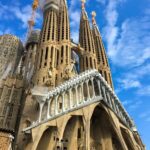 Bilety na zwiedzanie Sagrady Familii w Barcelonie - zakup z wyprzedzeniem
Bilety na zwiedzanie Sagrady Familii w Barcelonie - zakup z wyprzedzeniem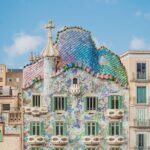 Casa Batlló: Gaudí's Blue Beauty
Casa Batlló: Gaudí's Blue BeautyIf you want to know other articles similar to The Magnificent Sagrada Familia: Discover Barcelona's Iconic Landmark Online you can visit the category WHERE YOU CAN GO.
Deja una respuesta

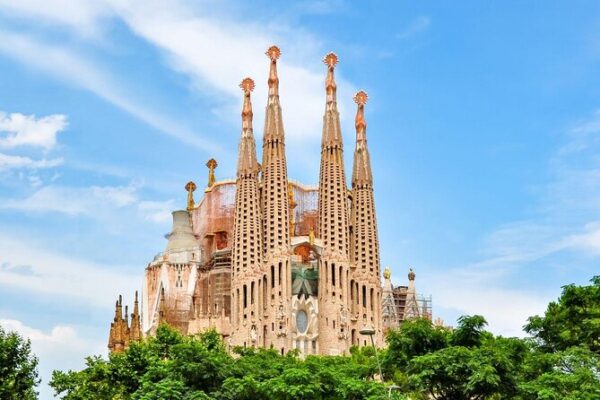
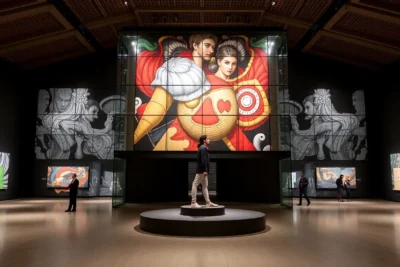
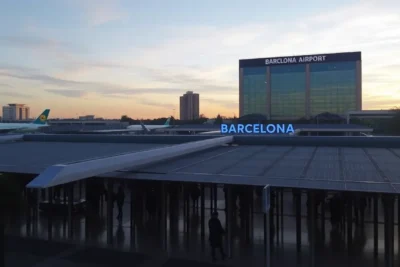

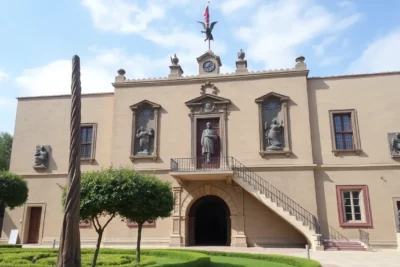
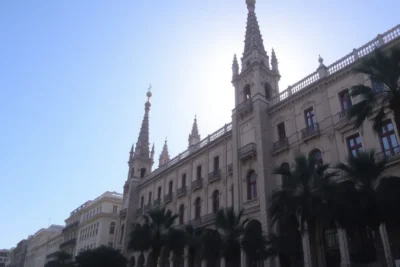
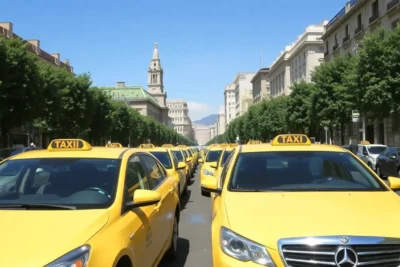
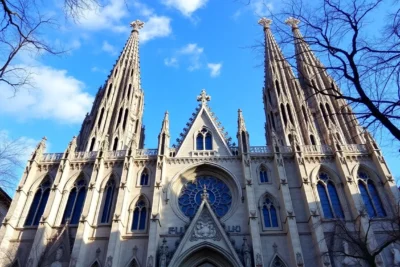
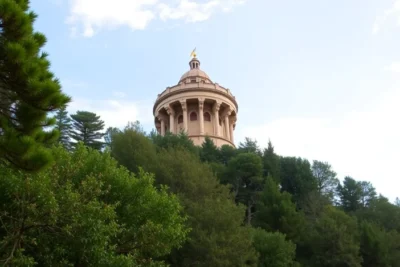
Read more!